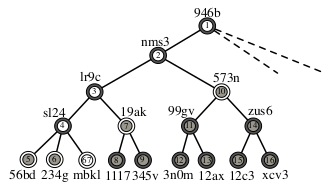Abstract
The REpresentational State Transfer (REST) represents an extensible, easy and elegant architecture for accessing web-based resources. REST alone and in combination with XML is fast gaining momentum in a diverse set of web applications. REST is stateless, as is HTTP on which it is built. For many applications, this not enough, especially in the context of concurrent access and the increasing need for auditing and accountability. We present a lightweight mechanism which allows the application to control the integrity of the underlying resources in a simple, yet flexible manner. Based on an opportunistic locking approach, we show in this paper that XML does not only act as an extensible and direct accessible backend that ensures easy modifications due to the allocation of nodes, but also gives scalable possibilities to perform on-the-fly integrity verification based on the tree structure.
BibTeX (Download)
@inproceedings{Graf2010Integrity,
title = {Integrity Assurance for RESTful XML},
author = {Sebastian Graf and Lukas Lewandowski and Marcel Waldvogel},
url = {https://netfuture.ch/wp-content/uploads/2010/graf10integrity.pdf},
year = {2010},
date = {2010-11-04},
urldate = {1000-01-01},
booktitle = {Proceedings of WISM 2010},
abstract = {The REpresentational State Transfer (REST) represents an extensible, easy and elegant architecture for accessing web-based resources. REST alone and in combination with XML is fast gaining momentum in a diverse set of web applications. REST is stateless, as is HTTP on which it is built. For many applications, this not enough, especially in the context of concurrent access and the increasing need for auditing and accountability. We present a lightweight mechanism which allows the application to control the integrity of the underlying resources in a simple, yet flexible manner. Based on an opportunistic locking approach, we show in this paper that XML does not only act as an extensible and direct accessible backend that ensures easy modifications due to the allocation of nodes, but also gives scalable possibilities to perform on-the-fly integrity verification based on the tree structure.},
keywords = {Security, XML},
pubstate = {published},
tppubtype = {inproceedings}
}



